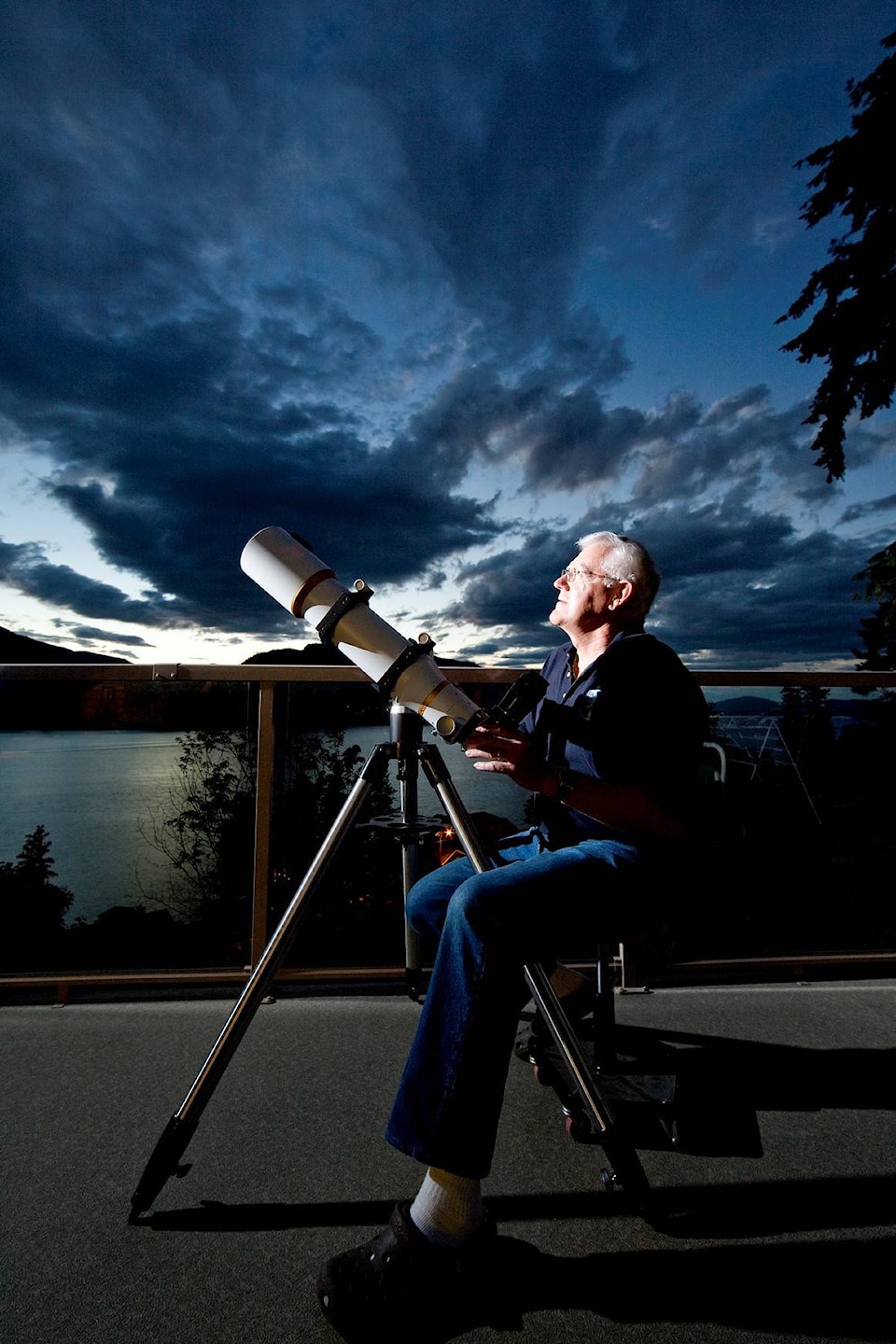March 3: One of the closest planet conjunctions of the year will arrive early this evening as fleet Mercury cruises past neighbouring Venus, welcoming it into the twilight sky early in its performance as our evening star. The two planets will be only two moon’s widths apart low in the western twilight sky. Binoculars or a telescope will add drama to the sight.
March 5: Mercury and Venus are still close together low in the southwest sky after dusk. Demonstrating planetary movement, the two planets have widened their separation to three moon widths instead of the two widths just two days ago.
March 6: A reminder that a window to observe the Zodiacal light will continue for the next couple of weeks. Under dark sky conditions, look for an arch of faint, hazy light stretching up from the western horizon. You will be looking at light being scattered by the leftover dust in the Sun’s equatorial plane.
March 7: The waning gibbous Moon has moved eastward in the sky and tonight it will pass less than three finger widths from brilliant Jupiter.
March 9: This is Last Quarter Moon night which announces the approach of the next dark moon period. Dark sky viewing, imaging and sketching can be enjoyed until the Moon rises after midnight, a window that will expand later each night until New Moon arrives on the 17th.
March 10: A reminder that Daylight Saving Time begins tomorrow so clocks, watches and microwave ovens should be ‘sprung ahead’ one hour before you retire for the night.
March 15: Though it is still low in the western sky after twilight, this is as good as it will get this year for observing Mercury. Tonight the innermost planet will reach its greatest eastern elongation from the Sun. Bright Venus will look on from below.
March 17/18: Since Saturday will be New Moon night, this weekend will be the primary window for 2018 Messier Marathon events. With the Moon out of the way, and if the weatherman cooperates, a dark sky will be available for observers to attempt to seek out as many of Charles Messier’s list of 110 celestial objects as possible. A gap in the Messiers’ locations in the sky coincides with this time of the year, allowing observers to glimpse the westernmost objects as night falls and the easternmost before dawn after a busy and challenging all-night session.
March 17: For those not hunting Messiers, Mercury and Venus will appear quite close together low in the southwest sky after dusk.
March 18: Another celestial hunt will be available at dusk tonight. It will be an opportunity to view a very young crescent Moon low in the southwest sky as evening begins. The planets Mercury and Venus will be of help since they will be located less than three finger widths above the fingernail paring crescent. Binoculars will be needed.
March 19: Climbing higher into the evening sky, the thin crescent Moon will pass below the Ice Giant Uranus this evening. Look for the tiny greenish planet about three finger widths north of the crescent with binoculars or a telescope.
March 20: This is a big day since it marks the first day of Spring in the northern hemisphere. The actual moment of the vernal equinox will occur at 9.15 a.m.
March 22: The waxing crescent Moon will be in the vicinity of bright Aldebaran in Taurus this evening. If the star looks orangish to you, you are right on the money. At home this orange giant star is 44 times the diameter of our Sun!
March 24: This is First Quarter Moon night with the romantic half lit sphere poised high in the spring evening sky. If it looks a bit larger than usual, this is because our neighbour will reach perigee, the closest point in its orbit to the Earth, on Friday.
March 28: Tonight brilliant Venus will pass very close to greenish Uranus low in the western sky. Binoculars will help, but a telescope will assist splitting the two planets and providing a dramatic picture.
March 28: The restless waxing gibbous Moon will pay another spring call on Regulus tonight. Alpha Leonis appears as the bright dot in Leo’s distinctive reversed question mark asterism.
March 31: This is Full Moon night, the second one this month which makes it a ‘Blue Moon’. This is reminiscent of January’s two Full Moons, but minus an eclipse.
Dave Gamble
Special to the Morning Star
@VernonNews
newstips@vernonmorningstar.com
Like us on Facebook and follow us on Twitter.
